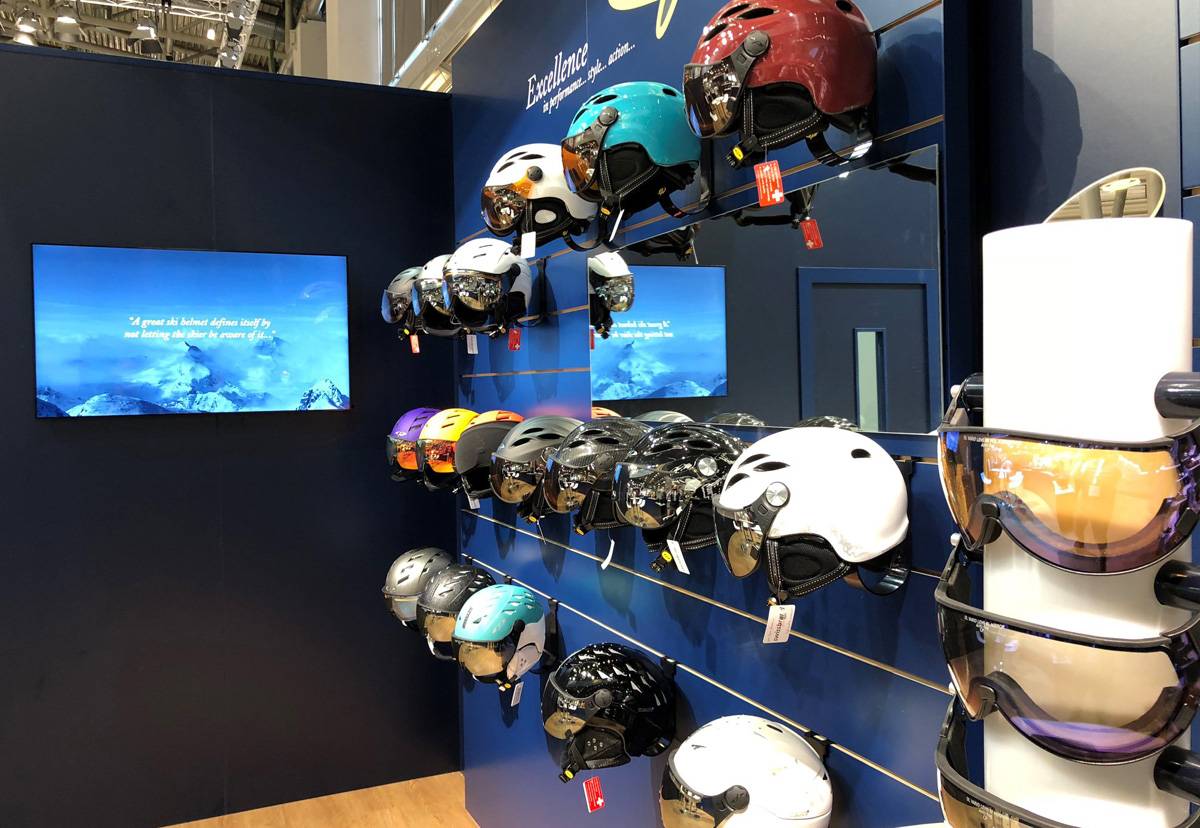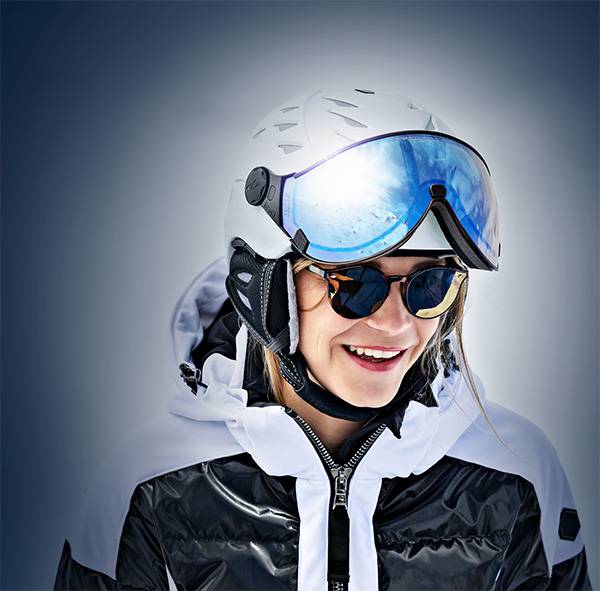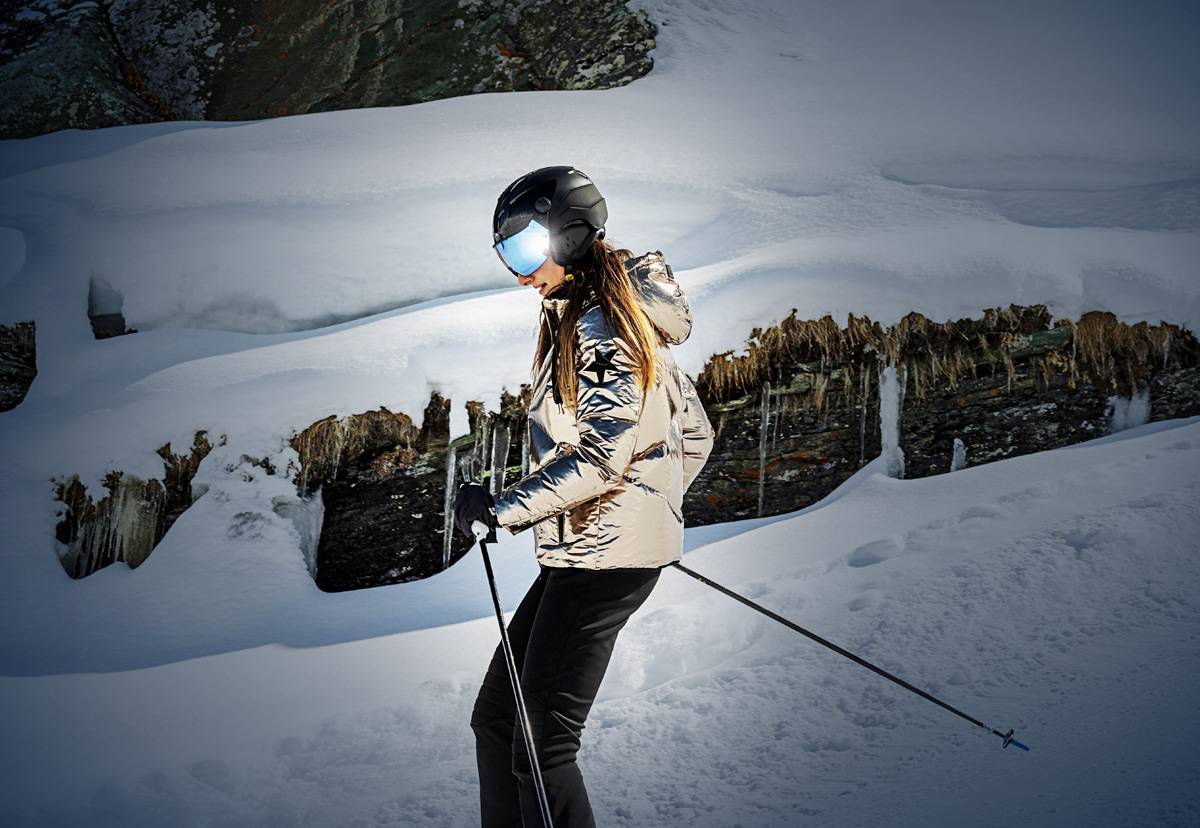
Is it time you upgraded your ski helmet or are you new to skiing and looking to buy your first one? We are of course assuming you do wear one as unlike days of old almost everyone on the mountain wears a helmet thanks to the comfort they provide and the safety they offer. With the speeds you can achieve on ski slopes and the potential for injury, it would be foolish not to wear one.
Ski helmets have evolved substantially over the last decade in so many ways, they are lighter, lower profile and offer more features than ever. You can now get a ski helmet built in audio systems that let you listen to music and even communicate with friends on the ski hill. Over the last several years there has been one revolutionary change in helmets that has created an entire new category of ski helmet and that is the addition of a permanently attached visor to the helmet, creating what is known as the “visor ski helmet”. So now not only do you have to first make sure that the helmet meets international safety standards, second that it fits comfortably and securely and third that it looks good on you, now you have to choose which model to start with before considering any of these factors. Seem like too much? Don’t worry I am going to break down the pros and cons of a ski helmet with a visor versus a ski helmet and goggles.
 What is a Visor Ski Helmet
What is a Visor Ski Helmet
First what actually is a visor ski helmet and what is a “visor” and how is this different than a traditional ski helmet? Visor ski helmets are generally constructed the same way as traditional ski helmets although exact construction methods vary from one manufacturer to another. The primary difference is there is a protective visor that is attached to the helmet, which can be flipped up or down, that shields you from sun, wind, snow and cold. Whereas with a traditional ski helmet you would need to purchase an additional pair of goggles to achieve this same level of protection. If you are unsure of what the actual visor is, it is simply anti-shatter polycarbonate with a variety of properties differentiating different ones. Those properties could include polarization, mirror coatings, anti-fog and more, the number and combination of these properties plays a large part in the cost of the visor lens and thus the helmet.
Pros & Cons
So let’s get started with comparing the pros and cons of the key features of these two styles of ski helmets.
Price: Of course, there are a number of factors in determining the cost of a ski helmet but if we are comparing 2 helmets from each category the visor ski helmet will generally cost more. But, when you factor in the price of goggles in many cases the visor ski helmet will cost less. So in terms of pricing, there is not much difference between the two and you can of course replace the visor on any quality helmet.
Protection: Again we should assume we are comparing two equally well-built ski helmets that offer certified protection. The next question is does the helmet offer what is considered next-generation protection from skidding angled falls that can cause concussions? There are at least two known construction methods that help protect from this type of fall MIPS and ODSA, it is advised to look for this protection and a helmet with either one will be equal. In terms of protection from the visor itself versus goggles the visor in most cases offers more protection to the face as it is more firm than soft goggles which can collapse into the face on a faceplant-type fall. In this category the visor gets the nod.
Interface: Not all goggles fit all helmets and the greatest problem will be a space between the goggles and the top of the shell. This space or what is known on the ski hill as “gaper gap” allows cold air and snow to get in and can actually cause a painful brain freeze. Since your visor is made to fit your helmet there are no gaps and you have a seamless interface between the visor and the helmet. So this is a bit of an equal as you can buy the same brand goggles and get a perfect fit but you will be limited in selection and your old goggles may not fit perfectly while the visor is guaranteed to fit the helmet perfectly.
 Field of vision: Because the housing of the goggle lens needs to fit inside the shell you loose considerable peripheral vision from that housing, while since the visor attaches to the shell and slides down over the face you have a considerably large field of vision with a visor ski helmet. This one is a clear winner for the visor ski helmet.
Field of vision: Because the housing of the goggle lens needs to fit inside the shell you loose considerable peripheral vision from that housing, while since the visor attaches to the shell and slides down over the face you have a considerably large field of vision with a visor ski helmet. This one is a clear winner for the visor ski helmet.
Eyeglasses compatibility: To our knowledge, there is not a single pair of goggles that fit over a pair of glasses well. The goggles usually push against the glasses in different places and this can be very painful. Additionally, because of the soft nature of the goggles in a fall to the face, the glasses can be smashed against the face and cause further damage. While the visor lens will slide right over the glasses with no contact and the stiff nature of the lens protects from the glasses being pushed into the face in case of a fall. This is a clear case where the visor ski helmet is superior.
Convenience: Ever get to the slopes and realize you forgot something, a glove, your pass or your goggles? That will never happen with a visor ski helmet as the lens is attached, this means one less piece of gear to carry and one less thing to loose. You can also easily flip the visor up on the chairlift while have you ever tried to put your goggles on your helmet only to have them go flying off the back? Or slide back down and smack you in the face? Not good. In this category the all-in-one ski helmet is a clear choice.
Selection: Considering that traditional ski helmet and goggle combinations have been around for decades and visor ski helmets are relatively new to the scene there are many more companies making traditional ski helmet and goggle combinations. There are only a few companies making visor ski helmets at this time so in this case you will get a larger selection from the traditional style with goggles.
So that covers the primary pros and cons of these two styles, we will leave it up to you to decide which one is better for you. We just want to see you on the slopes and with a helmet on protecting your most valuable asset, your brain!

